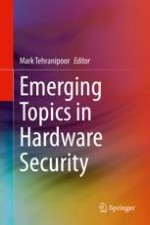2021 | OriginalPaper | Chapter
5. Machine Learning in Hardware Security
Authors : Shijin Duan, Zhengang Li, Yukui Luo, Mengshu Sun, Wenhao Wang, Xue (Shelley) Lin, Xiaolin Xu
Published in: Emerging Topics in Hardware Security
Publisher: Springer International Publishing
Activate our intelligent search to find suitable subject content or patents.
Select sections of text to find matching patents with Artificial Intelligence. powered by
Select sections of text to find additional relevant content using AI-assisted search. powered by
